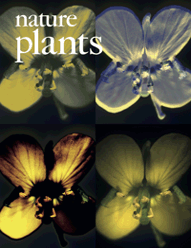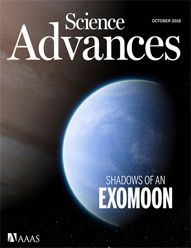
花姜酮
Zerumbone
|
|
产品编号 |
CFN91066 |
| CAS编号 |
471-05-6 |
| 分子式 = 分子量 |
C15H22O = 218.3 |
| 产品纯度 |
>=98% |
| 物理属性 |
Oil |
| 化合物类型 |
Sesquiterpenoids |
| 植物来源 |
The herbs of Zingiber officinale |
| ChemFaces的产品在影响因子大于5的优秀和顶级科学期刊中被引用 |
|
| 产品名称 |
产品编号 |
CAS编号 |
包装 |
QQ客服 |
| 花姜酮 |
CFN91066 |
471-05-6 |
10mg |
QQ客服:1457312923 |
| 花姜酮 |
CFN91066 |
471-05-6 |
20mg |
QQ客服:1457312923 |
| 花姜酮 |
CFN91066 |
471-05-6 |
50mg |
QQ客服:1457312923 |
| 花姜酮 |
CFN91066 |
471-05-6 |
100mg |
QQ客服:1457312923 |
1. 在您收到产品后请检查产品。如无问题,请将产品存入冰霜并且样品瓶保持密封,产品可以存放长达24个月(2-8摄氏度)。
2. 只要有可能,产品溶解后,您应该在同一天应用于您的实验。 但是,如果您需要提前做预实验,或者需要全部溶解,我们建议您将溶液以等分试样的形式存放在-20℃的密封小瓶中。 通常,这些可用于长达两周。 使用前,打开样品瓶前,我们建议您将产品平衡至室温至少1小时。
3. 需要更多关于溶解度,使用和处理的建议? 请发送电子邮件至:service@chemfaces.com
订购流程
1. 在线订购
请联系我们QQ客服
2. 电话订购
请拨打电话:
027-84237683 或 027-84237783
3. 邮件或传真订购
发送电子邮件到: manager@chemfaces.com 或
发送传真到:027-84254680
提供订购信息
为了方便客户的订购,请需要订购ChemFaces产品的客户,在下单的时候请提供下列信息,以供我们快速为您建立发货信息。
1. 产品编号(CAS No.或产品名称)
2. 发货地址
3. 联系方法 (联系人,电话)
4. 开票抬头 (如果需要发票的客户)
5. 发票地址(发货地址与发票地址不同)
发货时间
1. 付款方式为100%预付款客户,我们将在确认收到货款后当天或1-3个工作日发货。
2. 付款方式为月结的客户,我们承诺在收到订单后当天或1-3个工作日内发货。
3. 如果客户所需要的产品,需要重新生产,我们有权告知客户,交货时间需要延期。
ChemFaces的产品在许多优秀和顶级科学期刊中被引用

Cell. 2018 Jan 11;172(1-2):249-261.e12. doi: 10.1016/j.cell.2017.12.019.
IF=36.216(2019)PMID: 29328914
Cell Metab. 2020 Mar 3;31(3):534-548.e5. doi: 10.1016/j.cmet.2020.01.002.
IF=22.415(2019)PMID: 32004475
Mol Cell. 2017 Nov 16;68(4):673-685.e6. doi: 10.1016/j.molcel.2017.10.022.
IF=14.548(2019)PMID: 29149595
ACS Nano. 2018 Apr 24;12(4): 3385-3396. doi: 10.1021/acsnano.7b08969.
IF=13.903(2019)PMID: 29553709
Nature Plants. 2016 Dec 22;3: 16206. doi: 10.1038/nplants.2016.205.
IF=13.297(2019)PMID: 28005066
Sci Adv. 2018 Oct 24;4(10): eaat6994. doi: 10.1126/sciadv.aat6994.
IF=12.804(2019)PMID: 30417089
我们的产品现已经出口到下面的研究机构与大学,并且还在增涨
Universite Libre de Bruxelles (Belgium)
Ateneo de Manila University (Philippines)
Universidade de Franca (Brazil)
Northeast Normal University Changchun (China)
Lund University (Sweden)
Florida A&M University (USA)
National Chung Hsing University (Taiwan)
Korea Intitute of Science and Technology (KIST) (Korea)
Technical University of Denmark (Denmark)
University of Vigo (Spain)
Kitasato University (Japan)
University Medical Center Mainz (Germany)
University of Pretoria (South Africa)
University of Padjajaran (Indonesia)
More...
国外学术期刊发表的引用ChemFaces产品的部分文献
Front Pharmacol.2023, 14:1095083.
Int J Mol Sci.2020, 21(22):8816.
Molecules2022, 27(3),1140.
Food Bioscience2023, 59:103903
Pharmaceuticals (Basel).2024, 17(6):727.
Pharmaceuticals (Basel).2024, ;17(8):1018.
Appl. Sci.2021, 11(1),14.
Int J Biol Macromol.2019, 126:653-661
| Description: |
Zerumbone is a potential antimicrobial and antibiofilm agent indicated for the therapeutic management of nosocomial medical device-related infections induced by dual-species biofilms of C. albicans and S. aureus. Zerumbone protects the neuronal injury and ameliorates the cognitive function by stimulating the proliferation of endogenous neural stem cells; it suppresses enterotoxigenic bacteroides fragilis infection-induced colonic inflammation through inhibition of NF-κΒ. Zerumbone exhibits a hepatoprotective effect against ALI through its antioxidant and anti-inflammatory activities and the possible mechanism might be mediated by the TLR4/NF-κB/COX-2 pathway. Zerumbone can be a potential candidate for development of immunosuppressive agent. |
| Targets: |
NF-κB | TLR4 | COX | Notch-1 | Hes-1 | NOS | TNF-α | TLR |
| In vitro: |
| Microb Pathog. 2019 Oct 1;137:103768. | | Efficacy of zerumbone against dual-species biofilms of Candida albicans and Staphylococcus aureus.[Pubmed: 31585154 ] | Candida albicans and Staphylococcus aureus are the most common opportunistic pathogens that co-exist as mixed biofilms. Dual-species biofilms of C. albicans and S. aureus cause nosocomial medical device-related infections that are strongly resistant to antibiotics and host immune responses compared with mono-species biofilms. The purpose of this study was to describe the efficacy of zerumbone derived from Zingiber zerumbet (L.) Smith, on dual-species biofilm formation.
METHODS AND RESULTS:
This study examined the inhibitory effects of zerumbone on planktonic cell growth, adhesion and biofilm formation. The results demonstrated that zerumbone remarkably inhibited mono- and dual-species biofilms formed by C. albicans and S. aureus using the XTT [2,3-bis(2-smethoxy-4-nitro-5-sulfo-phenyl)-2H-tetrazolium-5-carboxanilide]-reduction assay. Furthermore, a significant decrease in biomass and cell density of dual-species biofilms following zerumbone treatment was confirmed using confocal laser scanning microscopy (CLSM).
CONCLUSIONS:
Therefore, our study suggests that zerumbone is a potential antimicrobial and antibiofilm agent indicated for the therapeutic management of nosocomial medical device-related infections induced by dual-species biofilms of C. albicans and S. aureus. |
|
| In vivo: |
| Folia Neuropathol. 2019;57(3):277-284. | | Zerumbone promotes proliferation of endogenous neural stem cells in vascular dementia by regulating Notch signalling.[Pubmed: 31588714 ] | Present investigation determines the effect of zerumbone on the proliferation of stem cells in vascular dementia (VD) rats.
METHODS AND RESULTS:
Vascular dementia was induced by cerebral ischemia and reperfusion through non-invasive clamp. Rats were treated with zerumbone 50 mg/kg and 100 mg/kg intraperitoneally 30 min for four weeks after the surgery. Cognitive functions are determined by the Morris water maze (MWM) test and neurological function score in VD rats. Moreover mediators of inflammation and parameters of oxidative stress were estimated in the brain tissue homogenate of ischemia-induced vascular dementia rats. The expression of proteins and mRNA expressions were determined by western blot assay and RT-PCR methods. Moreover histopathological changes were observed by H&E staining on the brain tissue of vascular dementia rats.
There was a significant reduction in the cognitive function and neurological score in the zerumbone-treated group compared to the VD group of rats. Data of the study reveal that treatment with zerumbone attenuates the altered level of cytokines and markers of oxidative stress parameters in the brain tissue of VD rats. The expression of NICD, Hes-1 and Nestin proteins was significantly (p < 0.01) reduced in the brain tissue of the zerumbone-treated group compared to the VD group of rats. There was a significant reduction in the mRNA expression of Notch-1 and Hes-1 in the brain tissue of the zerumbone-treated group compared to the VD group of rats.
CONCLUSIONS:
This study concludes that treatment with zerumbone protects the neuronal injury and ameliorates the cognitive function by stimulating the proliferation of endogenous neural stem cells. Moreover proliferation of neural stem cells was stimulated in zerumbone-treated rats by regulating the Notch signalling. |
|
|
1 mg |
5 mg |
10 mg |
20 mg |
25 mg |
| 1 mM |
4.5809 mL |
22.9043 mL |
45.8085 mL |
91.617 mL |
114.5213 mL |
| 5 mM |
0.9162 mL |
4.5809 mL |
9.1617 mL |
18.3234 mL |
22.9043 mL |
| 10 mM |
0.4581 mL |
2.2904 mL |
4.5809 mL |
9.1617 mL |
11.4521 mL |
| 50 mM |
0.0916 mL |
0.4581 mL |
0.9162 mL |
1.8323 mL |
2.2904 mL |
| 100 mM |
0.0458 mL |
0.229 mL |
0.4581 mL |
0.9162 mL |
1.1452 mL |
* Note: If you are in the process of experiment, it's need to make the dilution ratios of the samples. The dilution data of the sheet for your reference. Normally, it's can get a better solubility within lower of Concentrations.
部分图片展示
联系方式
电机:027-84237783
传真:027-84254680
在线QQ: 1413575084
E-Mail:manager@chemfaces.com
湖北省武汉沌口经济技术开区车城南路83号1号楼第三层厂房

ChemFaces为科学家,科研人员与企业提供快速的产品递送。我们通过瑞士SGS ISO 9001:2008质量体系认证
天然化合物与对照品的研发和生产。

 Cell. 2018 Jan 11;172(1-2):249-261.e12. doi: 10.1016/j.cell.2017.12.019.IF=36.216(2019)
Cell. 2018 Jan 11;172(1-2):249-261.e12. doi: 10.1016/j.cell.2017.12.019.IF=36.216(2019) Cell Metab. 2020 Mar 3;31(3):534-548.e5. doi: 10.1016/j.cmet.2020.01.002.IF=22.415(2019)
Cell Metab. 2020 Mar 3;31(3):534-548.e5. doi: 10.1016/j.cmet.2020.01.002.IF=22.415(2019) Mol Cell. 2017 Nov 16;68(4):673-685.e6. doi: 10.1016/j.molcel.2017.10.022.IF=14.548(2019)
Mol Cell. 2017 Nov 16;68(4):673-685.e6. doi: 10.1016/j.molcel.2017.10.022.IF=14.548(2019)

